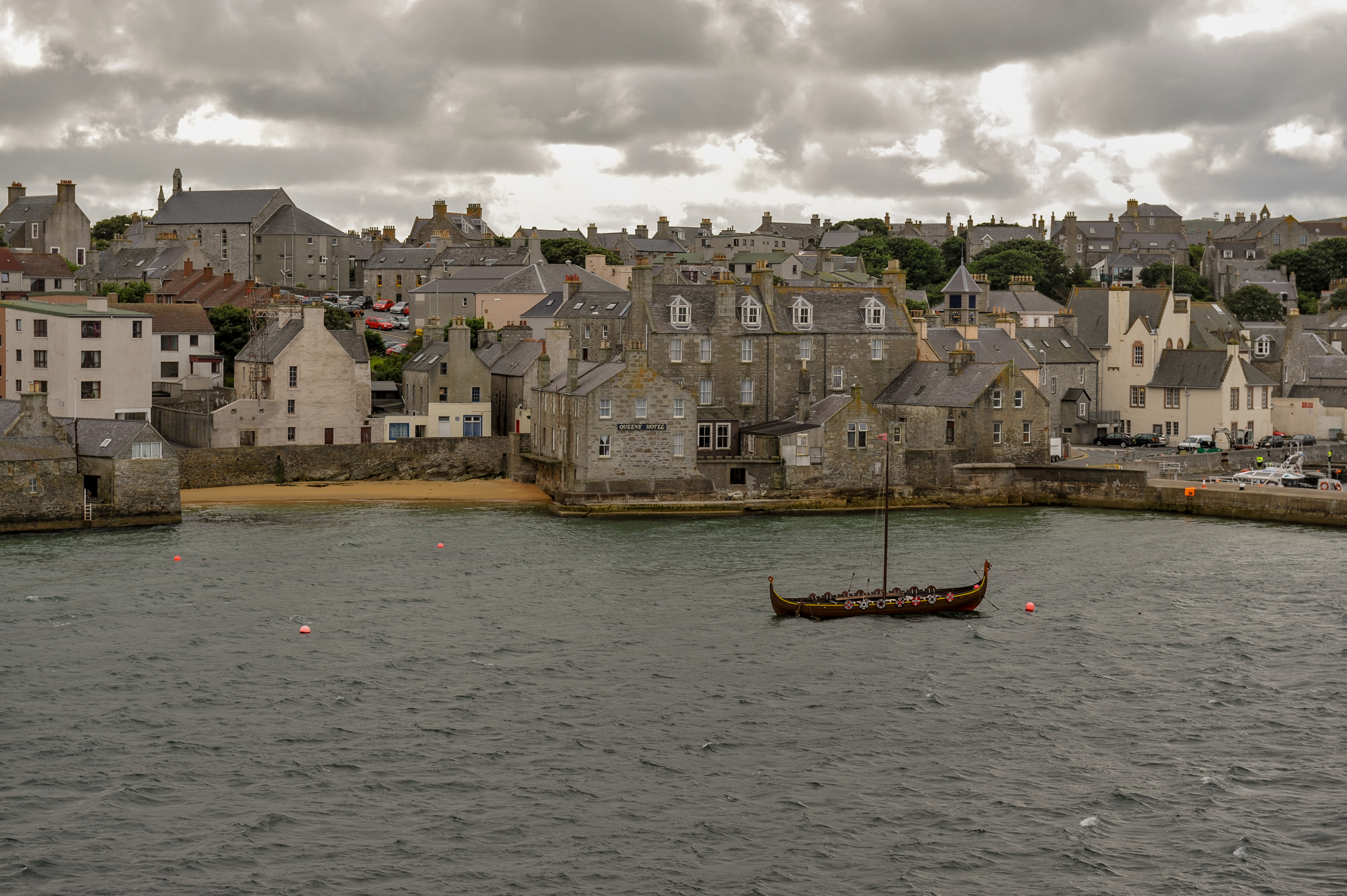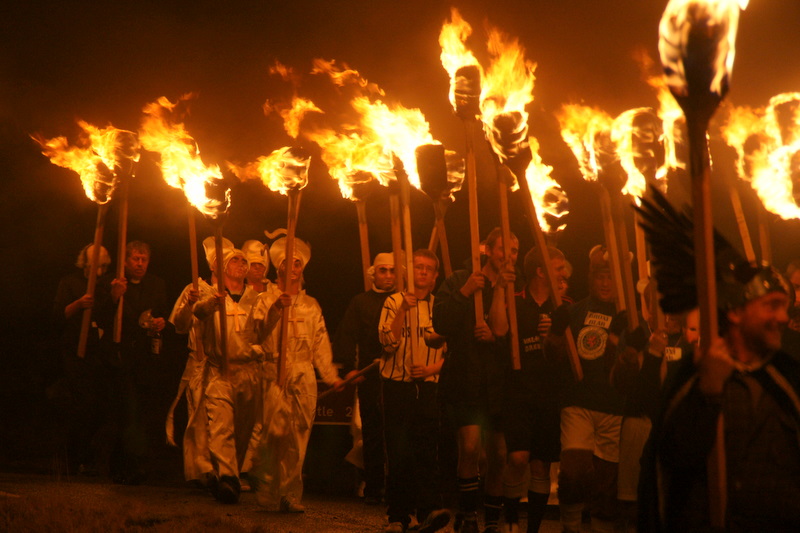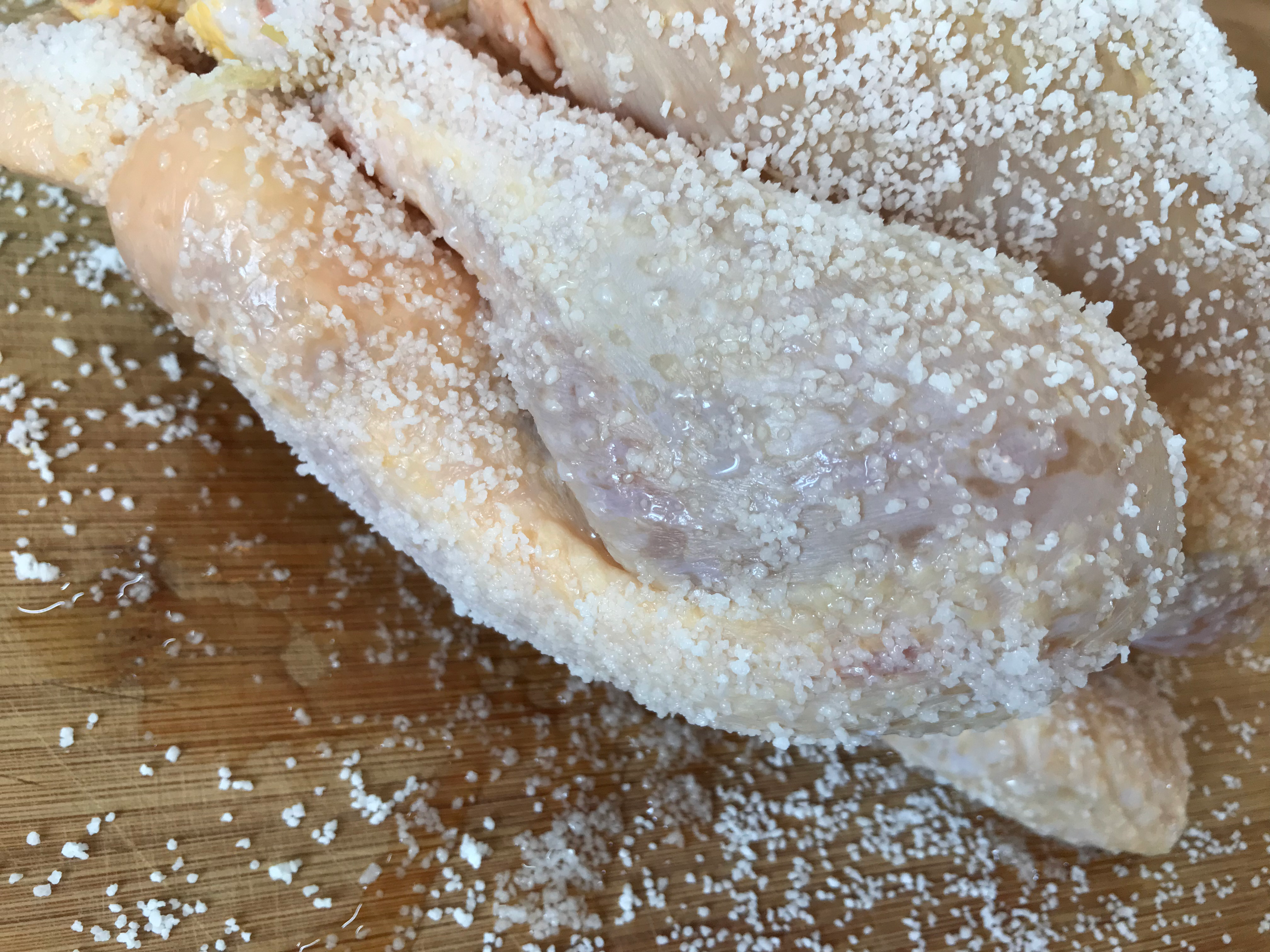|
Reestit Mutton
Reestit mutton (, ) is a type of salted mutton traditional to the Shetland Islands, Scotland. It has been termed "Shetland's national dish" Etymology The name ''reestit mutton'' comes from the Scots language word ''reest'', meaning to cure by drying or smoking. A wooden framework, called a reest, was traditionally placed across the rafters of a building, from which the mutton would traditionally be hung to dry with the aid of smoke from a peat fire. Origin Reestit mutton was traditionally prepared as a way of preserving mutton so that it could be eaten during winter. It is related to similar Scandinavian methods of drying meat, such as skerpikjøt. If prepared correctly reestit mutton can remain edible for up to four years. Preparation Reestit mutton is prepared by soaking a leg or shoulder of mutton in brine. The correct ratio of coarse salt to water for the brine is achieved when a potato or egg will float in the solution. Some recipes also call for the addition of a ... [...More Info...] [...Related Items...] OR: [Wikipedia] [Google] [Baidu] |
Lerwick
Lerwick (; non, Leirvik; nrn, Larvik) is the main town and port of the Shetland archipelago, Scotland. Shetland's only burgh, Lerwick had a population of about 7,000 residents in 2010. Centred off the north coast of the Scottish mainland and on the east coast of the Shetland Mainland, Lerwick lies north-by-northeast of Aberdeen; west of the similarly sheltered port of Bergen in Norway; and south east of Tórshavn in the Faroe Islands. One of the UK's coastal weather stations is situated there, with the local climate having small seasonal variation due to the maritime influence. Being located further north than Saint Petersburg and the three mainland Nordic capitals, Lerwick's nights in the middle of summer only get dark twilight and winters have below six hours of complete daylight. History Lerwick is a name with roots in Old Norse and its local descendant, Norn, which was spoken in Shetland until the mid-19th century. The name "Lerwick" means ''bay of clay''. The c ... [...More Info...] [...Related Items...] OR: [Wikipedia] [Google] [Baidu] |
Smoking (cooking)
Smoking is the process of flavoring, browning, cooking, or preserving food by exposing it to smoke from burning or smoldering material, most often wood. Meat, fish, and ''lapsang souchong'' tea are often smoked. In Europe, alder is the traditional smoking wood, but oak is more often used now, and beech to a lesser extent. In North America, hickory, mesquite, oak, pecan, alder, maple, and fruit-tree woods, such as apple, cherry, and plum, are commonly used for smoking. Other biomass besides wood can also be employed, sometimes with the addition of flavoring ingredients. Chinese tea-smoking uses a mixture of uncooked rice, sugar, and tea, heated at the base of a wok. Some North American ham and bacon makers smoke their products over burning corncobs. Peat is burned to dry and smoke the barley malt used to make Scotch whisky and some beers. In New Zealand, sawdust from the native manuka (tea tree) is commonly used for hot smoking fish. In Iceland, dried sheep dung is used ... [...More Info...] [...Related Items...] OR: [Wikipedia] [Google] [Baidu] |
Shetland Cuisine
Shetland, also called the Shetland Islands and formerly Zetland, is a subarctic archipelago in Scotland lying between Orkney, the Faroe Islands and Norway. It is the northernmost region of the United Kingdom. The islands lie about to the northeast of Orkney, from mainland Scotland and west of Norway. They form part of the border between the Atlantic Ocean to the west and the North Sea to the east. Their total area is ,Shetland Islands Council (2012) p. 4 and the population totalled 22,920 in 2019. The islands comprise the Shetland constituency of the Scottish Parliament. The local authority, the Shetland Islands Council, is one of the 32 council areas of Scotland. The islands' administrative centre and only burgh is Lerwick, which has been the capital of Shetland since 1708, before which time the capital was Scalloway. The archipelago has an oceanic climate, complex geology, rugged coastline, and many low, rolling hills. The largest island, known as " the Mainland", has a ... [...More Info...] [...Related Items...] OR: [Wikipedia] [Google] [Baidu] |
Up Helly Aa
Up Helly Aa ( ; literally "Up Holy .html" ;"title="ay/nowiki>">ay/nowiki> All") is a type of fire festival held annually from January to March in various communities in Shetland, Scotland, to mark the end of the Yule season. Each festival involves a torchlit procession by squads of costumed participants (known as guizers) that culminates in the burning of an imitation Viking galley. The largest festival held in Lerwick, Shetland's capital, involves a procession of up to a thousand guizers who march through the streets of Lerwick on the last Tuesday in January. The other rural festivals (known as the 'country' Up Helly Aas) see lower numbers of participants in accordance with their lower populations. Origins The current Lerwick celebration grew out of the older yule tradition of tar barrelling which took place at Christmas and New Year as well as Up Helly Aa. Squads of young men would drag barrels of burning tar through town on sledges, making mischief. According to the Shetla ... [...More Info...] [...Related Items...] OR: [Wikipedia] [Google] [Baidu] |
Bannock (food)
Bannock is a variety of flat quick bread or any large, round article baked or cooked from grain. A bannock is usually cut into sections before serving. Etymology The word "bannock" comes from northern English and Scots dialects. The ''Oxford English Dictionary'' states the term stems from ''panicium'', a Latin word for "baked dough", or from ''panis'', meaning bread. It was first referred to as "" in early glosses to the 8th century author Aldhelm (d. 709), and its first cited definition in 1562. Its historic use was primarily in Ireland, Scotland and Northern England. The Scottish poet Robert Burns mentions bannock in his ''Epistle to James Tennant of Glenconner'', in reference to Alexander Tennant. Early history The original bannocks were heavy, flat cakes of unleavened barley or oatmeal dough formed into a round or oval shape, then cooked on a griddle (or ''girdle'' in Scots). In Scotland, before the 19th century, bannocks were cooked on a bannock stane (Scots for stone) ... [...More Info...] [...Related Items...] OR: [Wikipedia] [Google] [Baidu] |
Egg As Food
Humans and human ancestors have scavenged and eaten animal eggs for millions of years. Humans in Southeast Asia had domesticated chickens and harvested their eggs for food by 1,500 BCE. The most widely consumed eggs are those of fowl, especially chickens. Eggs of other birds, including ostriches and other ratites, are eaten regularly but much less commonly than those of chickens. People may also eat the eggs of reptiles, amphibians, and fish. Fish eggs consumed as food are known as roe or caviar. Bird and reptile eggs consist of a protective eggshell, albumen ( egg white), and vitellus ( egg yolk), contained within various thin membranes. Egg yolks and whole eggs store significant amounts of protein and choline, and are widely used in cookery. Due to their protein content, the United States Department of Agriculture formerly categorized eggs as ''Meats'' within the Food Guide Pyramid (now MyPlate). Despite the nutritional value of eggs, there are some potential health issues ... [...More Info...] [...Related Items...] OR: [Wikipedia] [Google] [Baidu] |
Potato
The potato is a starchy food, a tuber of the plant ''Solanum tuberosum'' and is a root vegetable native to the Americas. The plant is a perennial in the nightshade family Solanaceae. Wild potato species can be found from the southern United States to southern Chile. The potato was originally believed to have been domesticated by Native Americans independently in multiple locations,University of Wisconsin-Madison, ''Finding rewrites the evolutionary history of the origin of potatoes'' (2005/ref> but later genetic studies traced a single origin, in the area of present-day southern Peru and extreme northwestern Bolivia. Potatoes were domesticated there approximately 7,000–10,000 years ago, from a species in the ''Solanum brevicaule'' complex. Lay summary: In the Andes region of South America, where the species is indigenous, some close relatives of the potato are cultivated. Potatoes were introduced to Europe from the Americas by the Spanish in the second half of the 16 ... [...More Info...] [...Related Items...] OR: [Wikipedia] [Google] [Baidu] |
Brining
In food processing, brining is treating food with brine or coarse salt which preserves and seasons the food while enhancing tenderness and flavor with additions such as herbs, spices, sugar, caramel or vinegar. Meat and fish are typically brined for less than twenty-four hours while vegetables, cheeses and fruit are brined in a much longer process known as pickling. Brining is similar to marination, except that a marinade usually includes a significant amount of acid, such as vinegar or citrus juice. Brining is also similar to curing, which usually involves significantly drying the food, and is done over a much longer time period. Meat Brining is typically a process in which meat is soaked in a salt water solution similar to marination before cooking. Meat is soaked anywhere from 30 minutes to several days. The amount of time needed to brine depends on the size of the meat: more time is needed for a large turkey compared to a broiler fryer chicken. Similarly, a large roast must ... [...More Info...] [...Related Items...] OR: [Wikipedia] [Google] [Baidu] |
Skerpikjøt
Skerpikjøt, a type of wind-dried mutton, is a delicacy of the Faroe Islands.Jóan Pauli Joensen, "Færøsk madkultur: En oversigt" , Granskingar ráðið, The Faroese Research Council. Retrieved 21 December 2012. Production The mutton, usually in the form of shanks or legs (''kjógv'' or ''bógv'' in Faroese, depending on which leg it is), is allowed to hang in a so-called ''hjallur'', a drying shed ventilated by the wind, for five to nine months. It has a very strong smell, which may upset those who are not accustomed to it. The hanging process covers three stages, or ''hjeldene.'' Each causing the meat to have different consistencies, smells and tastes. * The first, ''visnaður'', occurs ...[...More Info...] [...Related Items...] OR: [Wikipedia] [Google] [Baidu] |
Peat
Peat (), also known as turf (), is an accumulation of partially decayed vegetation or organic matter. It is unique to natural areas called peatlands, bogs, mires, moors, or muskegs. The peatland ecosystem covers and is the most efficient carbon sink on the planet, because peatland plants capture carbon dioxide (CO2) naturally released from the peat, maintaining an equilibrium. In natural peatlands, the "annual rate of biomass production is greater than the rate of decomposition", but it takes "thousands of years for peatlands to develop the deposits of , which is the average depth of the boreal orthernpeatlands", which store around 415 gigatonnes (Gt) of carbon (about 46 times 2019 global CO2 emissions). Globally, peat stores up to 550 Gt of carbon, 42% of all soil carbon, which exceeds the carbon stored in all other vegetation types, including the world's forests, although it covers just 3% of the land's surface. ''Sphagnum'' moss, also called peat moss, is one of th ... [...More Info...] [...Related Items...] OR: [Wikipedia] [Google] [Baidu] |
Rafter
A rafter is one of a series of sloped structural members such as wooden beams that extend from the ridge or hip to the wall plate, downslope perimeter or eave, and that are designed to support the roof shingles, roof deck and its associated loads. A pair of rafters is called a ''couple''. In home construction, rafters are normally made of wood. Exposed rafters are a feature of some traditional roof styles. Applications In recent buildings there is a preference for trussed rafters on the grounds of cost, economy of materials, off-site manufacture, and ease of construction, as well as design considerations including span limitations and roof loads (weight from above). Types in traditional timber framing There are many names for rafters depending on their location, shape, or size (see below). The earliest surviving roofs in Europe are of common rafters on a tie beam; this assembly is known as a "closed couple". Later, principal rafters and common rafters were mixed, which is ... [...More Info...] [...Related Items...] OR: [Wikipedia] [Google] [Baidu] |
Shetland
Shetland, also called the Shetland Islands and formerly Zetland, is a subarctic archipelago in Scotland lying between Orkney, the Faroe Islands and Norway. It is the northernmost region of the United Kingdom. The islands lie about to the northeast of Orkney, from mainland Scotland and west of Norway. They form part of the border between the Atlantic Ocean to the west and the North Sea to the east. Their total area is ,Shetland Islands Council (2012) p. 4 and the population totalled 22,920 in 2019. The islands comprise the Shetland (Scottish Parliament constituency), Shetland constituency of the Scottish Parliament. The local authority, the Shetland Islands Council, is one of the 32 council areas of Scotland. The islands' administrative centre and only burgh is Lerwick, which has been the capital of Shetland since 1708, before which time the capital was Scalloway. The archipelago has an oceanic climate, complex geology, rugged coastline, and many low, rolling hills. The lar ... [...More Info...] [...Related Items...] OR: [Wikipedia] [Google] [Baidu] |








.jpg)

